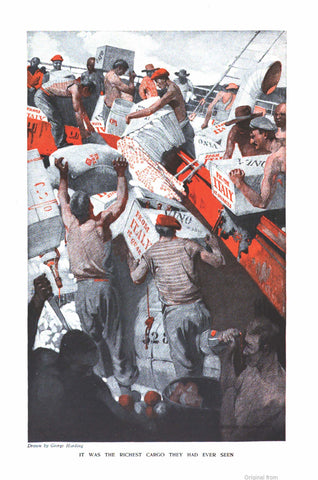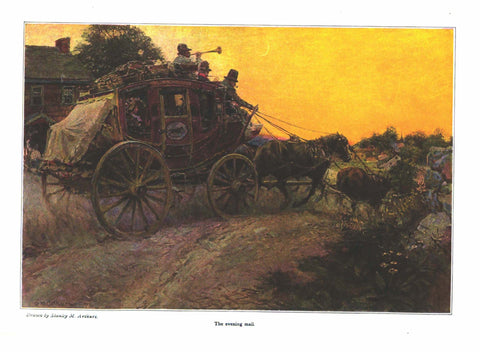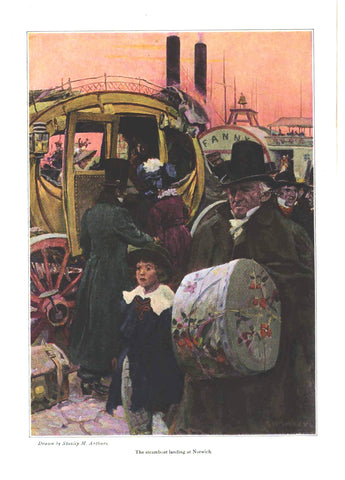Maxfield Parrish title page illustration for "The Golden Age" (1900)
$195.00
IMAGE INFORMATION
Image Size: H 7.50” x W 5.50”
Matted & Framed: H 13.50” x W 11.50”
Framed Price: $125.00
Packaging and shipping approximately $20.00
The first book MP illustrated was Frank Baum’s Mother Goose in Prose, which Way and Williams of Chicago published in 1897. Since its appearance coincided with Howard Pyle’s announcement that he had nothing more to teach the young artist (who attended HP’s illustration classes at Drexel Institute), perhaps HP came to this conclusion after perusing Mother Goose and deciding that MP was a designer rather than an illustrator. Whether or not this was the way it happened, the design-based illustrations MP created for Baum’s Mother Goose and for the books he illustrated after it were smashingly successful.
MP’s second book project, which he did in 1898, was an illustrated edition of Kenneth Grahame’s (second) collection of stories about a precocious child whose adventures were based on his own. Dream Days was published in the United States by Dodd, Mead & Company. It was published at the same time in England, it seems, by John Lane – The Bodley Head.
MP illustrated his third and fourth books two years later. The first to appear may have been John Lane’s illustrated edition of The Golden Age. Lane had published an unillustrated version of Kenneth Grahame’s (first) collection of stories based on his unusual childhood in 1895. The publisher had a New York office, but he may have printed the illustrated edition in England. Later that year, R. H. Russell published an illustrated edition of Washington Irving’s Knickerbocker’s History of New York.
Possibly because the artist requested it, Way and Williams reproduced MP’s Mother Goose illustrations using a complicated photo-mechanical process known as Rotogravure. Parrish may have liked this method of image reproduction because it produced a granulated image that perfectly expressed the artist’s lightly shaded line drawings. According to one account, John Lane used a similar process because it “produced black-and-white results superior to the halftone images in [his] 1899 edition of The Golden Age.”
The characters in MP’s Mother Goose were fairytale cartoon figures with outlandish shapes and comical features. The following year, MP began incorporating photography into his illustration. He did this by projecting images of models he had photographed onto his canvases using a Magic Lantern Image Projector. He placed the projected images in scenes he had laid out. He then completed the character and staging. Using photography in this way reduced the artist’s freedom to invent cartoon caricatures.
The title page of John Lane’s 1900 illustrated edition of The Golden Age is a fine example of this technique. Lane’s decision to reproduce MP’s pictures with a rotogravure image reproduction process may owe something to its ability to duplicate the photographed images in a more pleasing way.








